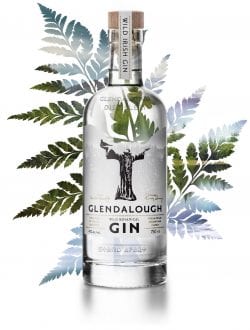
Gin is a spirit most commonly associated with juniper berries, indeed the name itself, ‘Gin’, is derived from the Dutch ‘jenever’, meaning juniper. The drink has been around for centuries if not millennia and likely began as a form of medicine. Today gin is growing out of its image as a dry, one dimensional, 80 proof alcohol made for either martinis or tonic. I must admit that I have always found that mold a bit boring.
The gin world is dominated by familiar brand names like Beefeater, Bombay and Tanqueray. These products shape the way gin is perceived and are, categorically, the same. As ‘London’ Gins we primarily see variations only in the sweetness of the product. London Gin, also called London Dry or simply Dry Gin, is a grain neutral spirit that has been re-distilled in the presence of natural herbs used for flavor (juniper always being the most prominent). The legal definition of gin requires the characteristic flavor of juniper berries. It is because the base spirit can be distilled from many forms of sugar (beets, cane, potatoes, grapes, etc.) that we find different flavors among Dry gins – and the above-mentioned brands are fine examples.
There exist a number of other gin designations, defined by the geographical origin of the product or even cultural significance. Plymouth Gin and sloe gin are respective examples. Along with these numerous variations is a rich history from medicine, to social disruption to disreputable bars that served gin of the lowest quality standards, even gin flavored with turpentine instead of juniper. Riots erupted in the 18th century when gin taxes imposed upon the popular drink of the time. Phrases that survive today (gin-mills, gin soaked drunks, mother’s ruin) grew out of the negative reputation of gin in London.
Upmarket bars brought gin to prominence in the era of real cocktails – an era that is seeing a great resurgence. Still, my early experience with gin just didn’t uncover much more than varied levels of sweetness. Genever was the first type of gin to spark some interest in the category with me. Oude Genever (or Jenever, Holland or Dutch Gin) is distilled from a grain mash akin to whiskey and is often aged in wood barrels. Such a gin is not for martinis, but for classic, traditional cocktails – the kind that used to be found in New York City bars and haunts for the likes of Don Draper. Perhaps there was more to gin than I had imagined?
In an article written by an Oregon distiller and shared with me by a longtime customer, the author makes an argument for creating a new term for the nascent gin revival: “New Western Gin”. The proposed categorization of a new identity of Gin really grabbed my attention. Suddenly it was clear that Gin is really becoming interesting as distillers strive to show their own expression of the spirit. Although juniper is the required dominant flavor, the wealth of herbs and botanicals allowed in gin create the opportunity for countless flavors to not only be included, but to come oh-so close to sharing the lead role. Hendrick’s Gin, with its distinct cucumber flavor is an easy example to cite and its immense popularity means that new gins are catching on.
